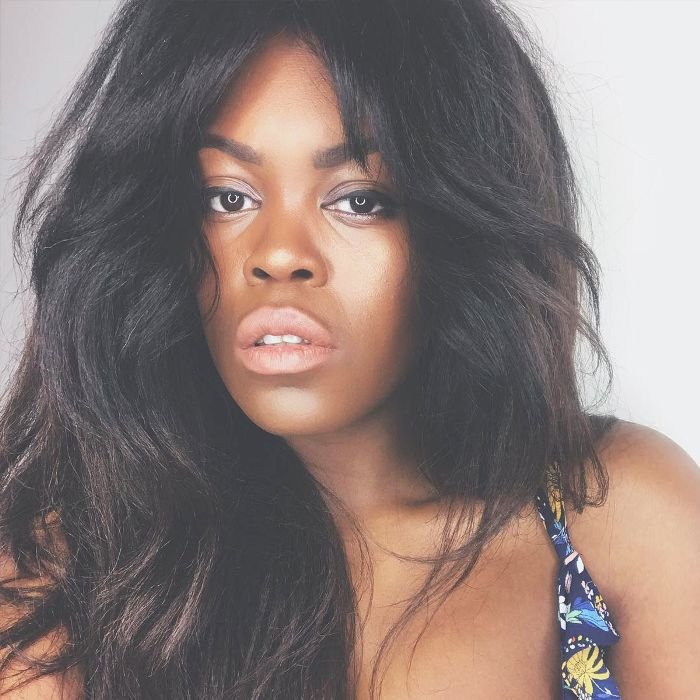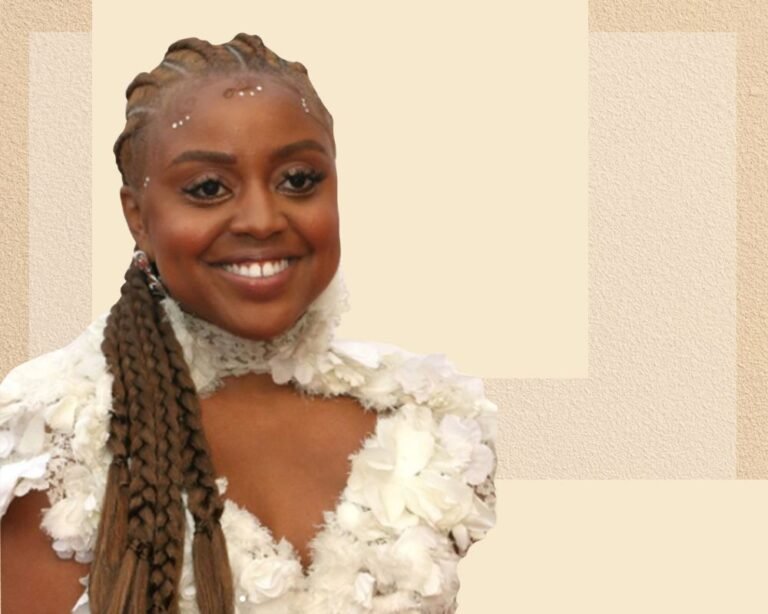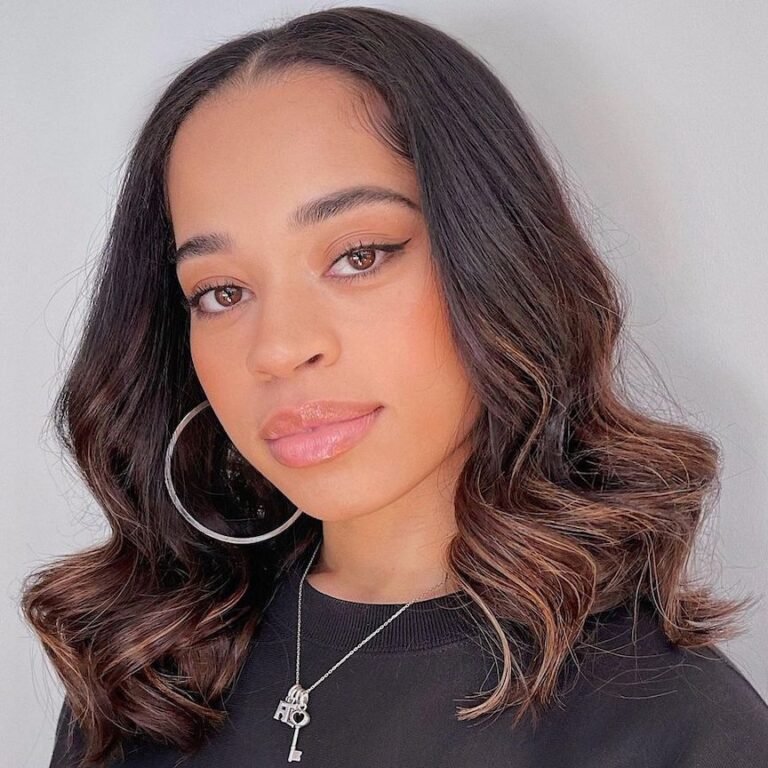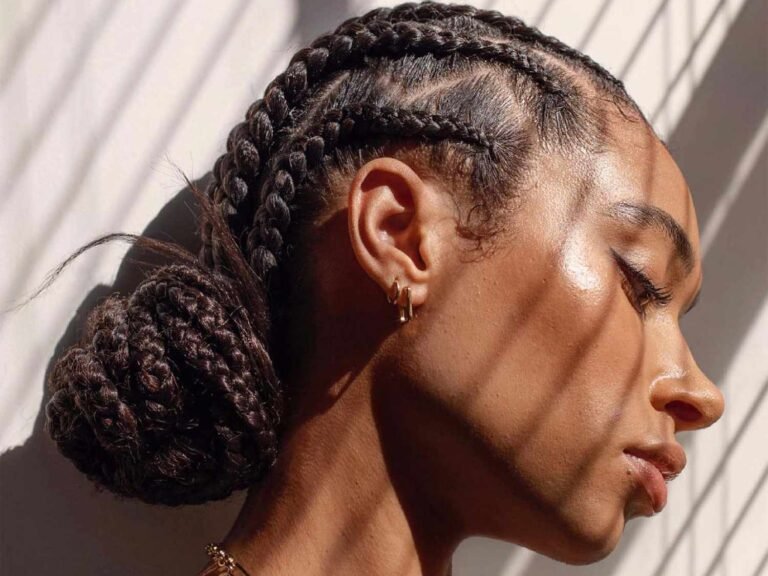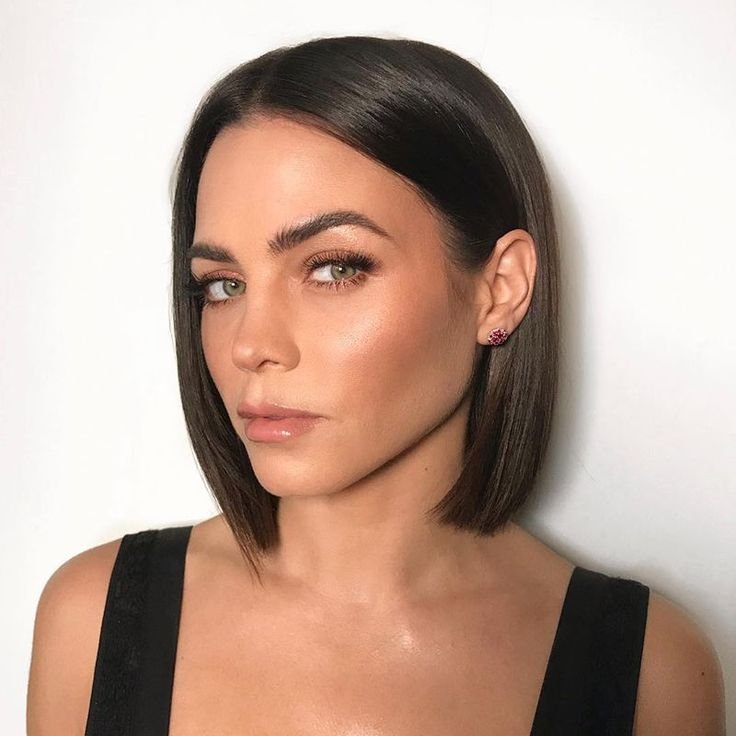What is Heat Training for Black Hair? Master the Technique for Gorgeous Results!
Heat training for black hair involves repeatedly straightening natural textured hair with tools like a flat iron, blow dryer, or hot comb to “train” the curls to loosen and resist reverting back to their natural texture when exposed to humidity. This process helps in achieving a straighter and more manageable hair texture, making styling and maintenance easier.
Heat training, also referred to as controlled heat damage, is a method of applying heat to natural hair to gently loosen the curl pattern and enhance humidity resistance. The process involves using heat styling tools such as flat irons, blow dryers, or hot combs to straighten the natural textured hair repeatedly.
This training aims to “train” natural curls to loosen and resist reverting back to their natural texture when exposed to humidity. The goal is to achieve a straighter and more manageable hair texture, making styling and maintenance easier. However, it’s crucial to be aware of the potential risks involved, such as heat damage and reduced elasticity, to maintain the overall health of the hair.

Credit: m.youtube.com
The Science Behind Heat Training
Heat training, also known as heat straightening, is a method often used by individuals with black hair to relax their natural curls and achieve a straighter, sleeker look. This process involves the use of heated styling tools such as flat irons and blow dryers to alter the hair’s natural texture. Understanding the science behind heat training is essential for maintaining the health and integrity of black hair while achieving desired styling results.
Effects Of Heat On Black Hair
When black hair is exposed to heat styling, it can significantly alter the structure and composition of the hair strands. High temperatures can cause the natural curl pattern to loosen and reduce the hair’s elasticity, leading to a straighter appearance. However, repeated exposure to heat can also weaken the hair, making it more susceptible to damage and breakage.
Proteins In The Hair: Keratin Strands
The proteins in black hair, particularly the keratin strands, play a crucial role in maintaining its strength and resilience. Heat styling can impact these proteins, leading to structural changes in the hair fibers. The application of high heat can convert the alpha-keratin to beta-keratin, affecting the hair’s overall texture and strength.

Credit: www.tiktok.com
Best Practices For Heat Training
Heat training for black hair refers to the process of repeatedly straightening natural textured hair using tools like a flat iron or blow dryer. This helps loosen the natural curls, making the hair more resistant to reverting back when exposed to humidity.
Proper care and limited exposure to heat are essential to prevent damage and breakage.
Frequency Of Heat Application
When it comes to heat training for black hair, it is important to find the right balance in terms of how often you apply heat to your hair. While heat can help to temporarily straighten your curls and create a desired style, excessive heat application can lead to damage and breakage.
To maintain the health of your hair, it is recommended to limit the exposure of direct heat to your natural hair to once a week. If your hair is already damaged, it is best to reduce the frequency even further. By decreasing the amount of heat you apply to your hair, you can prevent excessive protein structure alteration and minimize the risk of hair weakening.
Optimal Heat Levels For Styling
Choosing the ideal heat level for styling is crucial when heat training your black hair. While high temperatures might provide quick results, they can also lead to more significant damage in the long run. To minimize the risk of hair weakening and breakage, it is recommended to use medium to low heat settings.
By using these lower heat levels, you can still achieve the desired straightness and hairstyle without causing unnecessary harm to your hair. It is essential to note that each hair type and texture may have different heat tolerance levels. Therefore, it is important to understand your hair’s unique needs and adjust the heat settings accordingly.
When heat training, it is always advisable to use a heat protectant spray. This will create a barrier between your hair and the heat source, reducing the direct impact on your hair strands. Additionally, it is crucial to pay attention to the signs your hair is giving you. If you notice any signs of heat damage, such as excessive dryness or breakage, it is essential to adjust your heat application or consult with a hair care professional.
Protecting Black Hair During Heat Styling
Heat training is the process of repeatedly straightening natural textured black hair using tools such as a flat iron, blow dryer, or hot comb. The goal is to train the natural curls to loosen and resist reverting back to their original texture when exposed to humidity.
Limiting Heat Exposure
It is essential to limit the frequency of direct heat exposure to your natural black hair. Using direct heat more than once a week, or even less if your hair is already damaged, can lead to further harm.
Preventing Heat Damage And Breakage
Heat styling can alter the structure of the proteins, particularly keratin strands, in black hair. High temperatures convert ⍺-keratin to β-keratin, weakening the hair and reducing its elasticity. This results in limp and fragile hair, even after washing, making it more susceptible to breakage and damage.
- Start with a small amount of heat to test how your hair reacts, or opt for medium to low heat settings during styling.
- Use a heat protectant spray or serum before applying heat to create a barrier and reduce potential damage.
- Take regular breaks from heat styling to allow your hair to recover and rejuvenate.
By incorporating these preventive measures into your heat styling routine, you can minimize the risk of heat damage and breakage to your black hair.
Steps To Heat Train Black Hair
Heat training is a process of repeatedly straightening natural textured hair using tools like a flat iron, blow dryer, or hot comb. Its goal is to loosen natural curls and make them more resistant to reverting back to their original texture when exposed to humidity. If you’re looking to heat train your black hair, here are some important steps to follow:
Tools Needed For Heat Training
Before you start heat training your black hair, it’s crucial to gather the right tools. Here are some essentials:
- An effective flat iron: Look for a flat iron that has adjustable temperature settings and ceramic plates for even heat distribution.
- A quality blow dryer: Opt for a blow dryer that has different heat and speed settings to avoid excessive heat damage.
- A hot comb: If you prefer a more traditional approach, a hot comb, also known as a Marcel comb, can be used to straighten your hair.
- Heat protectant: Use a heat protectant spray or serum to minimize damage caused by heat.
- Wide-tooth comb: To detangle your hair before heat styling, use a wide-tooth comb to prevent breakage.
- Sectioning clips: These will help divide your hair into manageable sections for easier styling.
Techniques For Heat Training
Once you have the necessary tools, here are some techniques to consider when heat training black hair:
- Prep your hair: Start by washing and conditioning your hair with a moisturizing shampoo and conditioner. Avoid using heavy oils or products that may weigh your hair down.
- Apply a heat protectant: Prior to heat styling, apply a heat protectant throughout your hair to create a barrier between the heat and your strands.
- Divide your hair into sections: Using sectioning clips, divide your hair into manageable sections. This will make it easier to straighten each section evenly.
- Set your heat tools to the appropriate temperature: Adjust your flat iron or blow dryer to a temperature that suits your hair type and texture. Lower heat settings are generally recommended to minimize damage.
- Straighten your hair in small sections: Working with one section at a time, pass the flat iron through small subsections of hair, starting from the roots to the ends. Do this in a slow and controlled manner to ensure even heat distribution.
- Maintain moisture: To prevent excessive drying, it’s important to maintain moisture in your hair. Use a lightweight leave-in conditioner or oil to keep your hair hydrated.
- Protect your hair at night: To preserve the straightened style, wrap your hair with a silk or satin scarf or sleep on a silk or satin pillowcase.
- Limit heat exposure: Heat training should be done sparingly to avoid excessive damage. Try to limit heat styling to once a week, or even less if your hair is already damaged.
Remember, heat training should be approached with caution to minimize damage and maintain the health of your black hair. Always prioritize the health and well-being of your hair, and if you’re unsure about any step, consult with a professional stylist for guidance.
Common Misconceptions About Heat Training
Heat training for Black hair involves using heat tools like flat irons to relax natural curls. It aims to lessen curl retention, making it easier to style and resist humidity-induced reverting. However, frequent heat styling can weaken hair strands, increasing breakage risk.
Opt for heat styling sparingly for healthier hair.
Debunking Myths About Heat Training
Heat training for black hair is a common practice for those looking to achieve a straighter, sleeker style. However, there are several misconceptions surrounding this technique that need to be debunked. Let’s clear the air and uncover the truth about heat training for black hair.
Understanding Healthy Heat Training
To understand healthy heat training, it’s important to first debunk the myths surrounding this technique. Let’s take a closer look at some of the common misconceptions:
Myth: Heat Training Damages Natural Hair Irreversibly.
Fact: While excessive heat can cause damage to any hair type, when done correctly and with proper precautions, heat training can actually be a safe and effective way to temporarily alter the natural texture of black hair. The key is to use heat protectants and set your tool at the lowest effective temperature.
Myth: Heat Training Leads To Hair Loss.
Fact: Hair loss is not directly caused by heat training itself. However, using excessive heat or not properly caring for your hair can lead to damage, breakage, and eventually hair loss. It’s essential to moisturize and condition your hair regularly to maintain its health while heat training.
Myth: Heat Training Is A Permanent Solution.
Fact: Heat training is not a permanent solution for straightening black hair. The effects of heat training are temporary and will revert back to your hair’s natural texture over time. It’s important to note that over-reliance on heat can cause long-term damage and weaken the hair strands.
Myth: Heat Training Is The Only Way To Achieve A Straight Look.
Fact: While heat training can provide temporary straightening to black hair, there are alternative methods available. Protective hairstyles like braids, twists, or using heat-free styling techniques can also help achieve a straight look without subjecting your hair to excessive heat. It’s essential to explore different styling options to find what works best for your hair.
Myth: Heat Training Is Suitable For All Hair Types.
Fact: Heat training may not be suitable for all hair types, especially if your hair is already damaged or prone to breakage. It’s crucial to assess the condition of your hair and consult with a professional stylist before embarking on heat training. They can guide you on the best approach based on your hair’s specific needs.
Comparing Heat Training Devices
Heat training, also known as “heat training for black hair,” involves the use of heat styling tools like flat irons, blow dryers, or hot combs to straighten naturally textured hair. These tools can help alter the hair’s shape and allow for more manageable styling options.
Ceramic Vs. Titanium Irons
Ceramic irons distribute heat evenly, reducing the risk of hot spots and potential heat damage to the hair. They are suitable for fine and delicate hair types. On the other hand, titanium irons heat up quickly and are ideal for thicker and coarser hair, as they can withstand higher temperatures and provide efficient straightening.
Choosing The Right Heat Styling Tool
- Consider your hair type and texture when selecting between ceramic and titanium irons.
- For fine hair, a ceramic iron is recommended to prevent overheating and minimize the risk of damage.
- Thicker or coarse hair may benefit from the efficient heat distribution of titanium irons for effective straightening.
The Benefits Of Heat Training
Heat training for black hair involves using tools like flat irons or hot combs to gently loosen natural curls, making hair more manageable and resistant to humidity. This process helps prevent damage and breakage while maintaining a sleek, straightened look.
Explore the benefits of heat training for healthier, styled black hair.
Enhanced Styling Versatility
Heat training allows for varied styling options without damaging hair’s natural texture. Using heat tools like flat irons can create sleek looks or add volume with ease.Maintaining Hair Health With Heat Training
Heat training helps in controlling and styling natural hair effectively while reducing the risk of breakage. This method enables the hair to resist reverting to its natural texture in humid conditions. Heat training helps in controlling and styling natural hair effectively while reducing the risk of breakage. Heat training allows for varied styling options without damaging hair’s natural texture. Using heat tools like flat irons can create sleek looks or add volume with ease. Heat training helps in maintaining hair health by reducing breakage. This method enables the hair to resist reverting to its natural texture in humid conditions.
Credit: patternbeauty.com
Frequently Asked Questions
What Does It Mean For Your Hair To Be Heat Trained?
Heat training involves straightening natural textured hair with tools like flat irons to loosen curls for easier manageability.
What Does Heat Do To Black Hair?
Heat styling weakens black hair by altering keratin structure, making it less elastic, prone to damage, and breakage.
How Often Should You Put Heat On Black Hair?
Limit direct heat on black hair to once a week or less if your hair is already damaged. Start with low to medium heat and observe how your hair reacts. This helps protect your hair from damage and breakage.
What Is Heat Training?
Heat training is the repeated straightening of natural textured hair with tools like flat irons or blow dryers. Its goal is to loosen natural curls and make them resist reverting back to their original texture when exposed to humidity. Heat training can alter the hair’s protein structure and increase vulnerability to damage.
Conclusion
Incorporating heat training into your hair regimen can help you achieve the desired straightened look while minimizing damage. Understanding the impact of heat on black hair is crucial for maintaining healthy, resilient locks. By adopting suitable heat training techniques and limiting excessive heat exposure, you can effectively manage and care for your natural hair.

